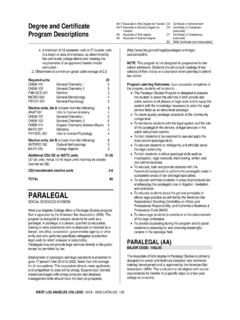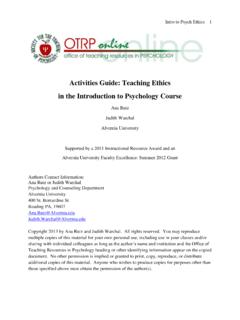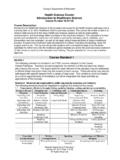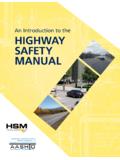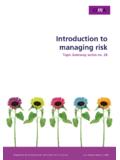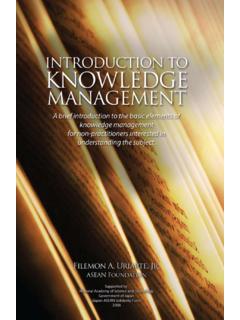Transcription of Intro to Online Teaching and Learning v.05
1 introduction to Online Teaching and Learning Joshua Stern, 1 introduction to Online Teaching and Learning Online Learning is the newest and most popular form of distance education today. Within the past decade it has had a major impact on postsecondary education and the trend is only increasing. In this workshop we will explore what the experience of Online Learning is like for students and how it has changed the role of the instructor. What is Online Learning ? Online Learning is education that takes place over the Internet. It is often referred to as e- Learning among other terms. However, Online Learning is just one type of distance Learning - the umbrella term for any Learning that takes place across distance and not in a traditional classroom.
2 Distance Learning has a long history and there are several types available today, including: Correspondence Courses: conducted through regular mail with little interaction. Telecourses: where content is delivered via radio or television broadcast. CD-ROM Courses: where the student interacts with static computer content. Online Learning : Internet-based courses offered synchronously and/or asynchronously. Mobile Learning : by means of devices such as cellular phones, PDAs and digital audio players (iPods, MP3 players). By far the most popular approach today is Online Learning . According to the Sloan Consortium, Online enrollments continue to grow at rates faster than for the broader student population and institutes of higher education expect the rate of growth to continue increasing.
3 Some of the key findings: Over million students were studying Online in the fall of 2003. Schools expect the number of Online students to grow to over million by the fall of 2004. Schools expect Online enrollment growth to accelerate the expected average growth rate for Online students for 2004 is , up from in 2003. The majority of all schools ( ) agree that Online education is critical to their long-term strategy. A majority of academic leaders believe that Online Learning quality is already equal to or superior to face-to-face instruction. (The no significant difference phenomenon.) (From: ) introduction to Online Teaching and Learning Joshua Stern, 2 How It Works In years past, instructors had to create their virtual classrooms from scratch which was difficult and often led to poor results.
4 Today, an entire industry has emerged to do this for us. Course Management System (CMS) software is utilized by just about all colleges today. CMS allow instructors to design and deliver their courses within a flexible framework that includes a number of different tools to enable Learning and communication to occur. Popular for-profit CMS include: Blackboard ( ) WebCT ( ) eCollege ( ) Low cost alternative and open source CMS include: ETUDES-NG ( ) Moodle ( ) Angel ( ) Any of these CMS offer functionality which allows instructors to deliver course content, enable communications, and conduct evaluations. The most common tools offered by CMS include: Schedule For posting and viewing deadlines, events, etc.
5 Announcements For posting current information to all students. Syllabus For creating and posting the course syllabus. Modules For publishing and viewing course content in sections. Assignments For posting, submitting, and grading student work. Discussion Board For asynchronous discussions, group work, and collaboration. Private Messages For private communication between students and/or the instructor. Chat For real-time, synchronous conversation in written form. Tests & Quizzes For authoring and administering exams, quizzes, surveys, etc. Gradebook For posting and managing student grades. A New Paradigm for Teaching and Learning Online Learning is catalyzing a pedagogical shift in how we teach and learn.
6 There is a shift away from top-down lecturing and passive students to a more interactive, collaborative approach in which students and instructor co-create the Learning process. The Instructor s role is changing from the sage on the stage to the guide on the side. Constructivism This point of view maintains that people actively construct new knowledge as they interact with their environment. This is a student-centered approach in which students co-create their introduction to Online Teaching and Learning Joshua Stern, 3 Learning experience. This approach empowers students as active learners instead of just passive recipients absorbing information and reproducing it for standardized tests.
7 Derived from the work of Swiss philosopher, Jean Piaget, constructivism emphasizes: The learner as a unique individual. The relevence of the learner s background and culture. Increased responsibility for Learning belongs to the student. Motivation for Learning comes from successful completion of challenging tasks. Instructors as facilitators helping learners develop their own understanding of content. Learning is an active, social process. The dynamic interaction between task, instructor and learner. Synergy! Constructionism Constructionism asserts that Learning is particularly effective when constructing something for others to experience.
8 This can be anything from a spoken sentence or an internet posting, to more complex things like a painting or a presentation. For example, you might read this page several times and still forget it by tomorrow - but if you were asked to explain these ideas to someone else in your own words, or produce a slideshow that explained these concepts, you would gain a deeper understanding that is more integrated into your own ideas. Collaboration As an instructor, you focus on the experiences that would best generate Learning from the learner's point of view, rather than just publishing and assessing the information you think they need to know. Each participant in a course can and should be a teacher as well as a learner.
9 Your job changes from being the sole source of knowledge, to being a guide and role model. You connect with students in ways that address their own Learning needs by moderating discussions and activities in a way that collectively leads students towards the larger Learning goals of the class. (Modified from: and ) Benefits of Online Teaching and Learning Why Online distance Learning and why now? Online distance Learning meets the needs of an ever-growing population of students who cannot or prefer not to participate in traditional classroom settings. These learners include those unable to attend traditional classes, who cannot find a particular class at their chosen institution, who live in remote locations, who work full-time and can only study at or after work, and those who simply prefer to learn independently.
10 The minimum requirement for students to participate in an Online course is access to a computer, the Internet, and the motivation to succeed in a non-traditional classroom. Online courses provide an excellent method of course delivery unbound by time or location allowing for accessibility to instruction at anytime from anywhere. Learners find the Online environment a convenient way to fit education into their busy lives. The ability to access a course from any computer with Internet access, 24 hours a day, seven days a week is a tremendous incentive for many of today s students. Some of the main advantages of Online Learning include: introduction to Online Teaching and Learning Joshua Stern, 4 Convenience: 24/7 access from any Online computer; accommodates busy schedules; no commuting, no searching for parking.









